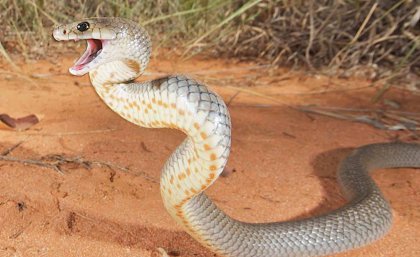Three Stages in the Life Cycle of a Snake
During the courtship, the male snake lifts the tail of the female with the help of its own tail for copulation. The male snake then deposits the sperms by inserting one of its two hemipenes (small sacs on the underside of the tail) into the cloaca of the female snake. In some snake species, fine spines are present on the hemipenes for holding the female during copulation. Mating may last from a few minutes to several hours. A female snake can mate with the same or different male several times during the mating season.
THE FOLLOWING ARE THOSE STAGES:
First Stage: Eggs
After mating, the female snake stores the sperms in the oviduct for about 1 - 2 months. The female then produces large eggs, which after releasing from the ovary are fertilized by the sperms from the oviduct. It lays the fertilized eggs (about 10 - 15 in number) in shallow holes or under the rocks. The outer covering of snake's egg is not hard, rather it resembles a soft leather. The female snake guards and looks after the eggs till they hatch into young ones.

Second Stage: Young Snakes
Some snake species warm the eggs by twitching their muscles, so as to speed up the hatching process. The juvenile snake comes out of the egg, by biting the egg cover with the help of egg tooth. Until then, it obtains nutrition from the egg yolk. A young snake is known as a snakelet. A just hatched one can be called a hatchling. Baby snakes feed on small reptiles and rodents. A young snake may shed its skin upto 4 times a year.
It is found that about 20 percent of the total snake species, especially those adapted to cold regions, give birth to young ones (viviparous). Some female snakes lay eggs even without fertilization, which is referred to as parthenogenesis.
Third Stage: Adult Snakes
After the juvenile snakes emerge, they attain maturity within 2 - 4 years. One of the major distinguishing features between a young snake and an older snake is the frequency of molting per year. In case of a juvenile snake, skin shedding takes place about four times a year, whereas an adult snake sheds only once a year, at the most, two times per year. However, unlike insects in which molting allows the growth of the organism, renewal of skin in snakes does not have a significant role in their growth.












No comments